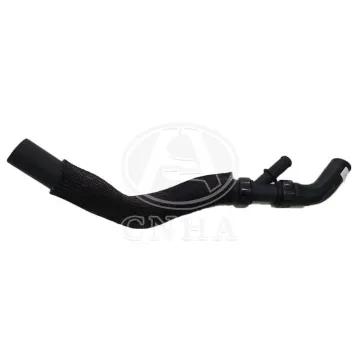How Do I Know If I Need A New Radiator Hose?
Aug. 18, 2021
Radiator hoses are part of a vehicle's cooling system. The hose delivers coolant to the radiator, where it cools the fluid, and then returns to the engine to prevent the vehicle from overheating. This allows your vehicle to run at the optimum temperature and prevents the engine from overheating or overcooling. There are two hoses that connect to the radiator. The upper hose connects from the top of the radiator to the top of the engine at the thermostat housing. The lower hose connects from the bottom of the radiator to the engine's water pump. If you suspect that either radiator hose is malfunctioning, look for the following symptoms.
1. Coolant Leak
If you notice a green fluid underneath your vehicle, your vehicle may be leaking coolant. This fluid will have a sweet smell. The fluid can come from the radiator hose, the radiator drain plug, or the radiator itself. Because of the many possibilities, it is important to have a professional mechanic diagnose the problem. If this is the problem, they will be able to replace the radiator hose.
Radiator Hose
2. Engine overheating
A vehicle's engine should not overheat, so once you notice this symptom, it indicates a problem with the cooling system. Radiator hoses may be the culprit as they have broken and leaked over the years due to exposure to high temperatures and pressures. Radiator hoses are the most common cause of overheating. If the engine is allowed to continue to overheat, it may cause the engine to fail and the vehicle will no longer run.
3. Low Coolant
If your low coolant light is on, or you have to keep replenishing the fluid, there may be a leak in the radiator hose. This type of leak should be visible in the form of a drip where the vehicle is parked. Driving with low coolant is not a good idea, as you may run out on your way to your destination. This means your car could stall or overheat, leaving you stranded on the side of the road and causing serious damage to your engine.
Radiator Hose
4. Collapsed radiator hoses
If you look under the hood and notice that the radiator hose has collapsed, there is a problem. The rubber hose may have collapsed because it has become soft or floppy. In other cases, a cooling system failure can cause a hose to collapse. In either case, it must be inspected because a collapsed coolant hose will not flow coolant properly. This can lead to vehicle overheating and engine damage.
5. Broken radiator hose
Radiator hoses can break in many different ways. If you feel comfortable checking yourself, check for leaks, expansions, holes, collapses, ruptures, or floppy hoses. Once you notice any of these, your radiator hose needs to be replaced because it is broken.
Once you notice a coolant leak, an overheating engine, a low coolant light coming on, or a damaged radiator hose, have a professional mechanic inspect and/or replace the radiator hose.
Designed to replace original equipment manufacturer hose, Hongan 31293622 Volvo Radiator Coolant Hose are built with knitted reinforcement and EPDM construction which provides high strength and resistance to mud, salt, road debris, ozone, coolants, and temperature variations of -40 F (-40 C) to +248 F (+120 C) that are required for OEM hose replacements. The inner base tube is reinforced with knitted rayon for maximum strength and burst resistance for the life of the hose. It meets SAE J20R4 requirements. Welcome to contact us today or visit our website to learn more about radiator hose wholesale.








